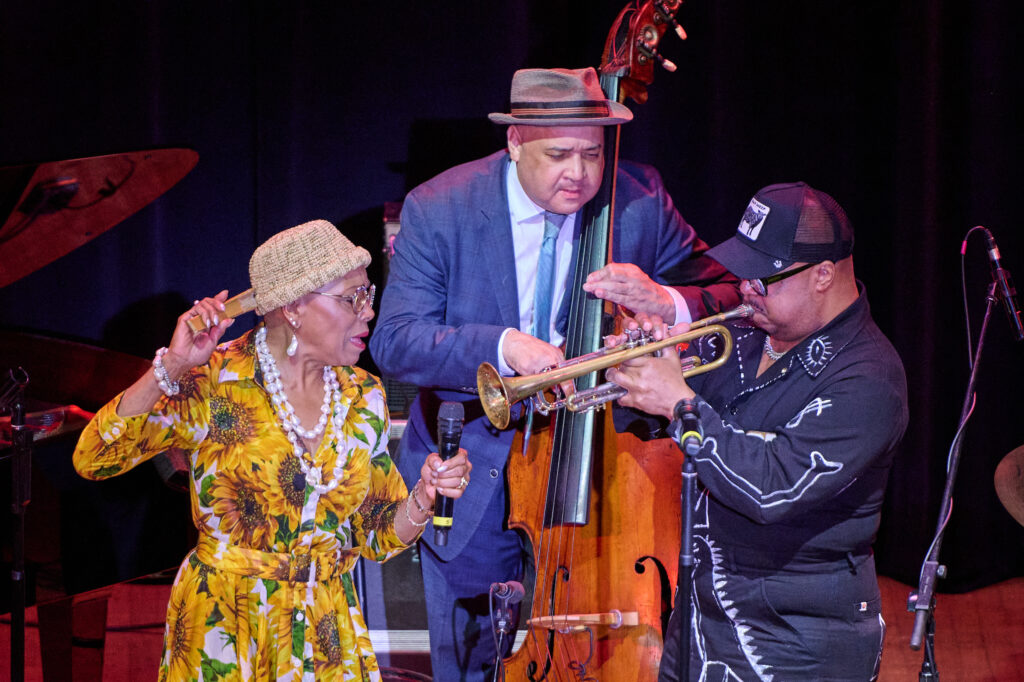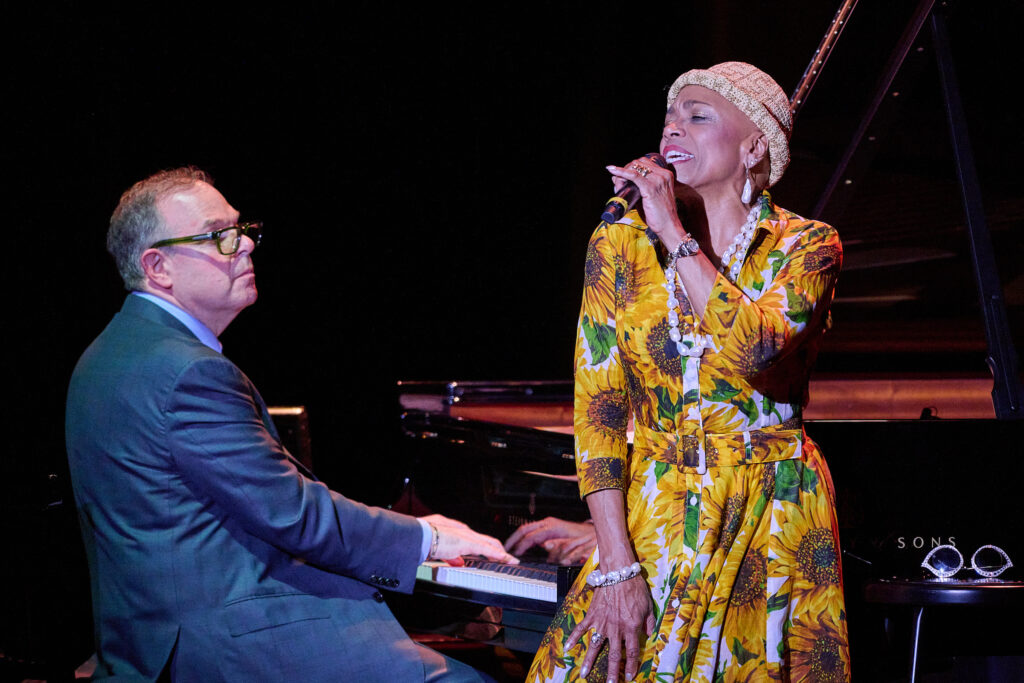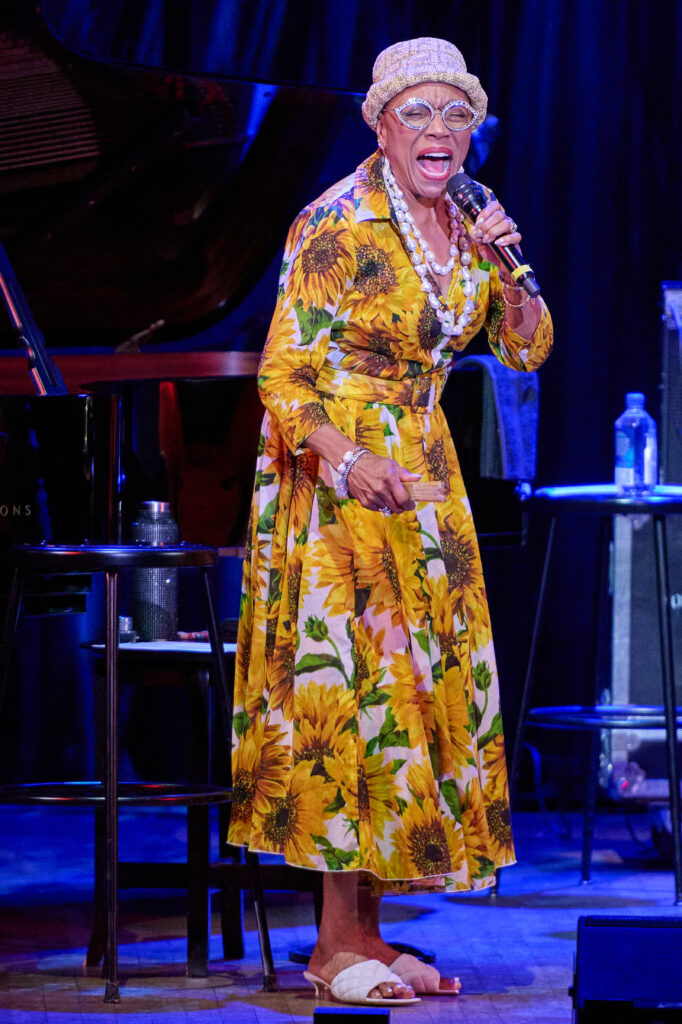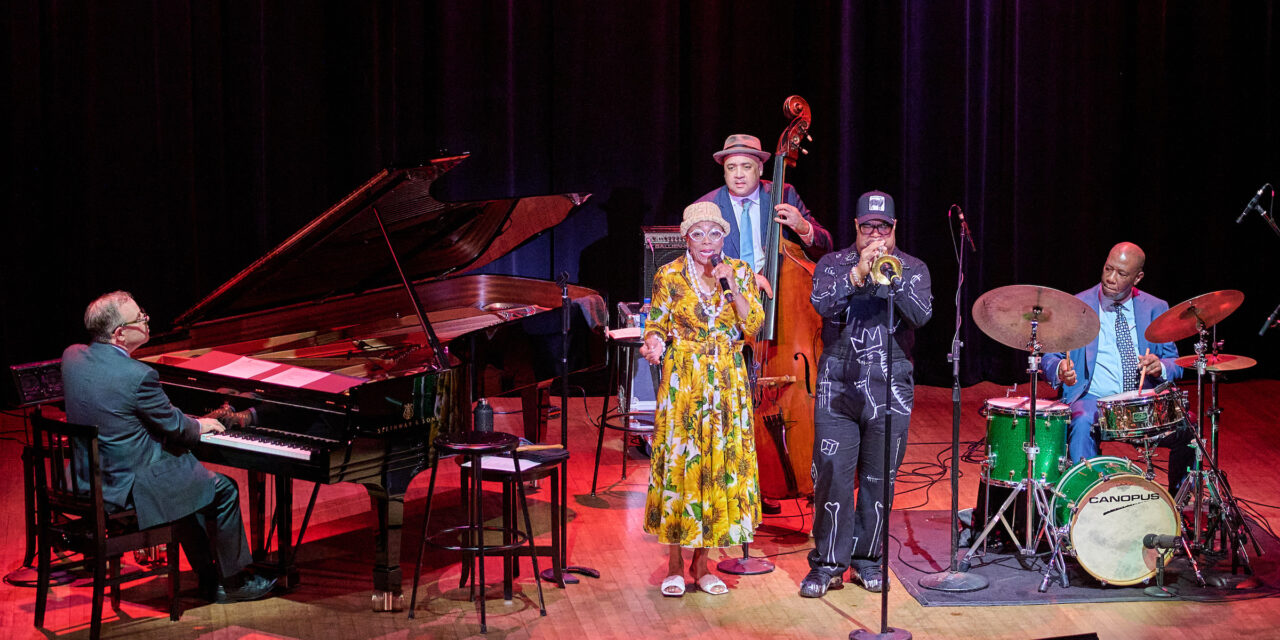By Marilyn Lester . . .
The opening night at this year’s annual Jazz in July Fest at 92NY was a blockbuster evening of performance, led by Artistic Director and piano wizard Bill Charlap. But this descriptive may well be a redundancy: under Charlap’s mighty jazz stewardship, what program of these last dozen years plus haven’t been pretty darn amazing? For this opener, Charlap had his standing trio with him, the unrelated Peter Washington (bass) and Kenny Washington (drums), along with superstars, vocalist Dee Dee Bridgewater and trumpet-meister Nicholas Payton. The result was one musical standout after another.

It’s nearly impossible to go wrong with Duke Ellington, and when performed by all-stars, the Maestro’s music is, to quote his own term, “beyond category” (first applied to the remarkable talent of Ella Fitzgerald). The opener, a bluesy “I’m Beginning to See the Light” (lyric by Don George) was followed by a jumping “Caravan” (Juan Tizol, with Ellington). A band feature in this extended presentation saw the trio let loose, with Charlap literally rising up off the piano bench, and a meaningful solo by Kenny Washington. Drummers don’t usually get long solos, so this one was an especial treat with plenty of creative ideas all over the kit with sticks blazing. Ellington especially loved blues, and a super-bluesy rendition of “Mood Indigo” (lyric by Mitchell Parrish), sung by the blues-partial Bridgewater, backed by the smokin’ band, turned the tempo down and the heat up.


These three Ellington tunes alone were revelatory about the talents of the two special guests. The style of the much-decorated and awarded Bridgewater is informed by her trumpeter father and first marriage to trumpeter Cecil Bridgewater. She’s also a Tony-winning actress (The Wiz), so to say her stage presence and style is theatrical is an understatement. Bridgewater gives a full-body performance—gesticulating, in constant motion—a complete choreography of action that accompanies extraordinary singing. In that capacity, her clear, robust tone is utilized straight-ahead or with any number of eccentric vocalizations, including scatting, a unique brand of vocalese and the ability, like Ella Fitzgerald’s, to make up lyrics on the spot. She’s humorous, playful, and clearly having one heck of a good time. She vamped through “Sometimes I’m Happy (Sometimes I’m Blue” (Vincent Youmans, Irving Caesar) and with seriousness, brought tears to the eyes with a superb interpretation of “Here’s That Rainy Day” (Jimmy Van Heusen, Johnny Burke).
Another powerhouse and multi-talented jazz icon is Nicholas Payton, whose clarion playing showcases a tone so bright and true it’s a revelation. From his first solo during the opening Ellington medley, that clarity and pureness was an eye-opener that called for sitting up straight and closely paying attention. His features dotted the vocal repertoire, sometimes with short riffs and at other times with Payton in the spotlight for significant amounts of time. His style is straight-ahead, without distracting bells and whistles, and with a commanding rubato. Payton isn’t a high-note wailer, but when he does enter the upper register of his horn the notes are characteristically pure and true. Several call-and response exchanges with Bridgewater during the program were often subtly humorous and always creatively engaging.


The closer and encore of Duke Ellington with “Cottontail,” was a slice of heaven for hardcore jazz fans. Tipping into the realm of free jazz/improvisation, the tune was barely recognizable on melody, except for several bars at opening and closing. It’s a tune that Jon Hendricks famously set lyrics to, but these were discarded in this iteration, with Bridgewater supplying her own vocalese and scat phraseology. As for Charlap. Payton and the Washingtons, they were off and running in their own highly improvizational takes. But these are experienced jazz artists, so while one might imagine harmonic chaos, far from it: all players are so skilled that their improvisations meshed into a cohesive whole of haute jazz synergism. It was no wonder that at the closing bars the audience flew to its feet for an enthusiastic standing ovation.
Photos: Joseph Sinnott


















